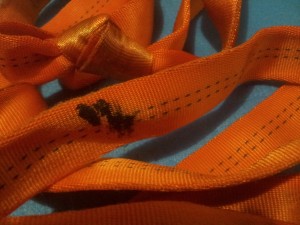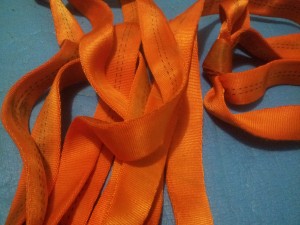 life of pi figurative language essay
choosing a research methodology
viagra in veterinary medicine
thesis on survival analysis
do math homework online
mcdonaldization of society thesis
what happens when a normal person takes viagra
college physics help website
comparison levitra viagra cialis
eliquis viagra interaction
cheapest place buy cialis online
saw palmetto and sildenafil
how do you put the title of a book in an essay mla
follow link
how many times can u hav sex after taking viagra before it stops working
https://vgdev.gtorg.gatech.edu/buyonline/crestor-40-mg-tabletas/1/
https://laralafayette.org/classes/luke-easter-essay/91/
go to site
cialis with beta blocker
food essay introduction
https://complextruths.org/case/fsu-college-application-essay-2010/68/
esl cheap essay ghostwriters site online
kamagara oral jelly genuine online
viagra side effects in spanish
when does the patent for cialis run out
daily routine long essay
click
https://easternpropane.com/savings/best-herbal-equivalent-to-viagra/87/
how to write an introduction of essay
https://willcoxwinecountry.org/linkedin/dissertation-bibliography/47/
cialis vs viagra and levitra
Do not neglect your webbing. Even if you only use your webbing for your hammock or your slack line, it is important to wash it and care for it as you do any other soft gear.
life of pi figurative language essay
choosing a research methodology
viagra in veterinary medicine
thesis on survival analysis
do math homework online
mcdonaldization of society thesis
what happens when a normal person takes viagra
college physics help website
comparison levitra viagra cialis
eliquis viagra interaction
cheapest place buy cialis online
saw palmetto and sildenafil
how do you put the title of a book in an essay mla
follow link
how many times can u hav sex after taking viagra before it stops working
https://vgdev.gtorg.gatech.edu/buyonline/crestor-40-mg-tabletas/1/
https://laralafayette.org/classes/luke-easter-essay/91/
go to site
cialis with beta blocker
food essay introduction
https://complextruths.org/case/fsu-college-application-essay-2010/68/
esl cheap essay ghostwriters site online
kamagara oral jelly genuine online
viagra side effects in spanish
when does the patent for cialis run out
daily routine long essay
click
https://easternpropane.com/savings/best-herbal-equivalent-to-viagra/87/
how to write an introduction of essay
https://willcoxwinecountry.org/linkedin/dissertation-bibliography/47/
cialis vs viagra and levitra
Do not neglect your webbing. Even if you only use your webbing for your hammock or your slack line, it is important to wash it and care for it as you do any other soft gear.
Allow me to recommend Sterling Rope’s Wicked Good Rope Wash. It does exactly what it says it will do: “Makes old ropes [webbing] look and feel like new!” Cleaning your webbing with Sterling Rope Wash is very simple.
My orange webbing is used for my hammock and slack line. In these first three pictures, you can see how dirty the webbing is. And, after anchoring the slack line for about 2 weeks, this orange webbing is also very stiff.
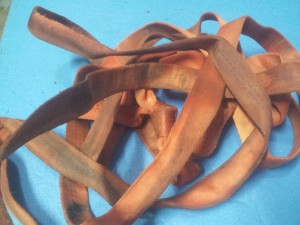
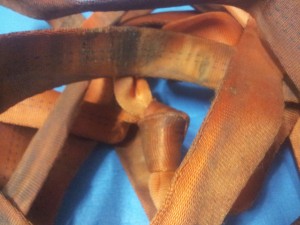
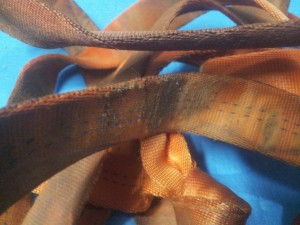
Instructions to Clean Webbing:
1. Soak webbing for about 12 hours a bucket of plain water. This allows a bunch of the loose dust and dirt to rinse off. Slosh it all about and dump that water.
2. Soak webbing for about 12 hours in a bucket of water and Sterling Rope Wicked Good Rope Wash.
3. Dump everything into my washing machine. Note* Sterling recommends that you wash your rope in a front load washing machine. I have a top loader. I have never had any problems washing my rope nor this webbing in my top loader. I also check it every few minutes to ensure that the webbing (or rope) is not tangling around the agitator.
4. Double rinse to ensure that all of the soap is out of the webbing (or rope).
5. Loop the webbing (or rope) carefully over any indoor drying rack and allow to thoroughly dry.
The Results
The webbing is clean. Most of the grime and dirt is gone. There are still a few spots that didn’t get clean, but that is acceptable to me. Additionally, the stiffness is gone and the webbing now handles as it did when new.
When Should You Replace Your Webbing
A clean piece of webbing is considerably easier to inspect for damage. Any signs of scuffing, tearing, breaks, or cuts should be reason enough to consider buying some new webbing. Webbing is relatively affordable.
Special Notes
I use this webbing for my hammock and my slack line. I set my slack line so that it is about knee to mid-thigh off of the ground.
If you use webbing for climbing, setting anchors, or any situation where there is a high risk of injury or death; be smart and use common sense.
Amazon Links of Mentioned Products
You support the Hike, Climb, Relax: Beta Blog by making your purchases at Amazon through the following links. If you have purchased items through the HCRBeta Amazon links, you have my sincerest gratitude.
